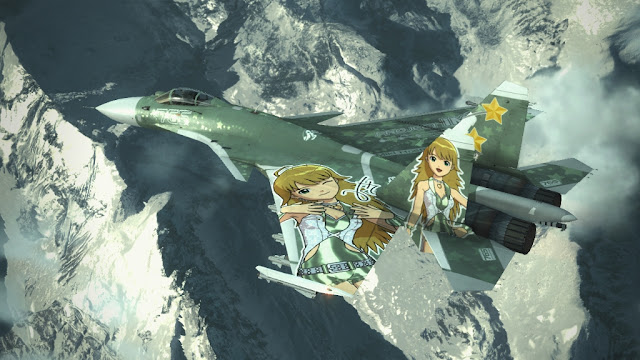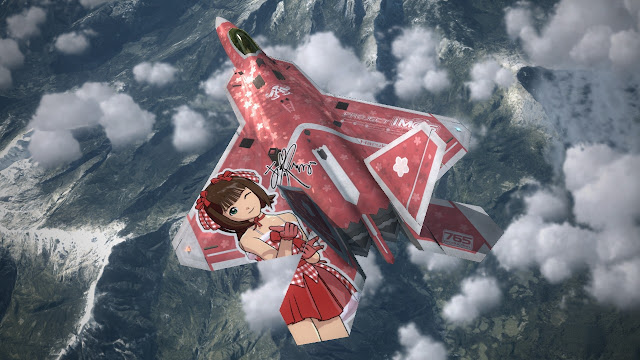a thread for aviation technology..about aviation history, whats new, previews and the future of aviation

Results 1 to 10 of 25
-
06-02-2009, 12:46 AM #1
 Aviation Technology - Military and Civil
Aviation Technology - Military and Civil
-
06-02-2009, 09:00 AM #2
Muslim Student Reinventing Flight Technology
By Suzanne Fouad
Freelance Writer - USA
Graduation season brings with it a chance for the next generation of Muslims to shine. It is also a time to recognize the accomplishments of those who had the opportunity to obtain higher education. Ahmad Mahmoud is one of this year's exceptional graduates with an interesting story to tell.
Once you meet Mahmoud, it doesn't take long to realize that he is always finding a new topic to delve into. He constantly has new ideas and theories on his mind and doesn't mind sharing them with anyone who will listen.
Growing up, Mahmoud went to Islamic as well as public schools in New Jersey, USA, where he always challenged his teachers. He went on to major in Aerospace Engineering at Rutgers University in New Jersey.
His active mind paved the way for him to take on a unique senior design project, followed by a NASA internship, and finally a unique career opportunity. The accomplishments of this young man are a refreshing reminder of the contributions Muslims make in the scientific world.
Learning from Butterflies
Mahmoud's senior design project involved travelling to Venezuela to study the flight of butterflies in order to utilize that knowledge and then replicate it through the use of technology.
He explained his research project to IslamOnline.net saying, "In Venezuela I videotaped and captured butterflies and other insects in order to study their wing structure and flight mechanisms."
He explained that after acquiring the necessary data, he and his colleagues returned to the US and analyzed the high speed video they taped to help them understand the exact wing movements of these insects.
"We also analyzed the wing structures in order to make sense of the complicated deformations that these wings underwent when flapping with such intricate patterns," he added.
His research resulted in the development of a new technique to generate lift with foldable wings which can be used to replicate flight for highly controlled miniature vehicles. These miniature vehicles can be used in a variety of ways, which include the ability to maneuver through narrow spaces that helicopters and airplanes cannot attain. These findings were used in his senior design project.
In addition to this, Mahmoud and his team "worked on a device that could be clamped onto any solid surface, converting that surface into a touch conscious system. Through sensing and analyzing the vibrations on a surface, it can extrapolate where the surface was touched," he explained.
The technology could be used on any surface to let the user know where it had been touched. The applications of such a technology include its use for security purposes among others. Mahmoud and his team completed the design of the device in May 2009, and named it the Multi-surface Adaptable Touch Sensor. Rutgers University awarded them first place in a competition for project design.
A Bright Future Ahead
Mahmoud's accomplishments didn't stop there. During his studies at the university he received news from his dean regarding an internship at NASA. There he was offered a co-op position. As he had always been interested in space, this seemed like a golden opportunity.
NASA welcomed Mahmoud with open arms, where he was one of a very few number of Muslims working there. He had the opportunity to work on a mass spectrometer that is to be used on the moon to detect water particles in craters. In simple terms, the device he worked on would be used to differentiate water molecules from other particles in order to identify the presence of water on the moon.
His work proved to be substantial enough for NASA to extend him a job opportunity upon graduation. In September, following his graduation, Mahmoud will be starting a new position with them at the Goddard Space Flight Center in Maryland. There, he will be working at the Cryogenics department.
Cryogenics involves the study of very low temperatures and the behavior of materials at those temperatures. His position will involve the designing of a liquid hydrogen fuel pump for the Ares I and Ares V rockets.
According to NASA, the Ares rockets will be sending future astronauts into space, taking them back to the moon, to Mars and onto other parts of the solar system. The Ares V rocket will be the main vessel for reliable and safe delivery of large hardware to space, including materials necessary to "extend a human presence beyond Earth orbit." (NASA)
It is clear this young man, who grew up playing in the mosque on weekends and challenging his teachers at school, has a wealth of potential for impacting science. Born to immigrant Egyptian parents, Mahmoud's accomplishments show the strong side of today's Muslim graduates.
Sources:
"Constellation: NASA's New Space Craft: Ares and Orion." NASA. Accessed 15 May 2009.
Suzanne Fouad graduated from the University of Texas at Dallas with a degree in Interdisciplinary Studies concentrating on Elementary Education. She resides in North Texas where she has always been an active member in the Muslim community. She is currently pursuing freelance writing centered around topics of interest to the Muslim world today.You can contact her by sending an e-mail to ScienceTech@islam-online.net.Last edited by Malic; 06-02-2009 at 09:07 AM.
-
06-02-2009, 09:32 AM #3
-
06-02-2009, 09:52 AM #4
-
06-02-2009, 09:58 AM #5
kng nagtuo mo na ang honda kay motor og awto ra, well, karon nana cla eroplano...
here's what i got from the news:
The Honda HA-420 HondaJet

The Honda Motor Company Ltd quietly developed a light corporate jet, the HA-420 HondaJet, at its aerospace research facility at Greensboro-Piedmont Triad airport, North Carolina, US. In 1986 Honda began research into compact business jets, using engines from other manufacturers. However, details of this research have never been revealed. From 1999 Honda developed its own turbofan jet engine, the HF-118, which was testflown on a Cessna Citation. This engine features a single fan, a two-stage compressor and a two-stage turbine. The wing shape of the future HondaJet was tested on a Lockheed T-33.
The HA-420 HondaJet made its first flight on December 3 2003. The aircraft will undergo about 200 hours of flight testing to verify its flying characteristics and performance.
A prominent feature of the HondaJet is the over-the-wing engine configuration. Because no carry-through structure is needed in the aft fuselage for the engine mounts, this allows for a full-width cabin farther aft gaining 30% extra space within the same dimensions. Honda also claims that this configuration reduces drag at higher speeds.
The fuselage is made of composite material, a lightweight co-cured carbon composite/honeycomb sandwich, while the wings are made of integrally stiffened skin panels formed from single sheets of aluminum, offering a smoother surface than conventional configurations. The wing uses Honda's proprietary turbulence reducing laminar SMH-1 airfoil, which is rather thick but offers low drag at high speed. Also the nose is designed to generate laminar flow to reduce drag. Honda claims that these features, together with the fuel-efficient HF-118 engines, achieve a 40% higher fuel efficiency. The aircraft is equipped with a Garmin G-1000 glass cockpit with three displays and an integrated avionics system. Four passengers can be accomodated with two crew, or five passengers with a single pilot.
Honda has not yet revealed if and when the HondaJet will be taken into production, but late 2003 there were rumours that Honda is investigating the possibilities to take over an existing US company to facilitate the production of the aircraft.
-
06-02-2009, 01:29 PM #6
guess what happens when airforce collides with art(err, read too much manga)



what a way to surprise the enemy
-
06-02-2009, 01:56 PM #7
First, before everything else, the plateauing has to be stopped. To understand what I mean by "plateauing", watch this TED video featuring Burt Rutan, designer of Spaceship One, the first privately-funded manned rocketglider to ever reach the edge of space.
YouTube - Burt Rutan: Entrepreneurs are the future of space flight
-RODION
-
06-02-2009, 04:26 PM #8
-
06-02-2009, 05:17 PM #9Banned User

- Join Date
- May 2008
- Gender

- Posts
- 6,786
are those images really painted on the planes? or are they computer graphics only?
-
06-02-2009, 05:32 PM #10
Advertisement
Similar Threads |
|







